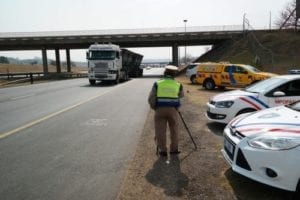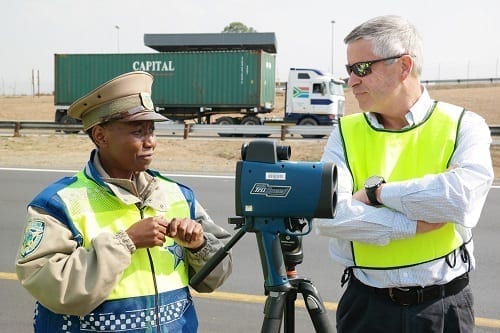Seventeen vehicle message sign boards along the route communicate information to drivers, be it about an accident or to warn of inhibiting smoke. With over 50 000 followers, Twitter has become an important communication tool for the N3TC. Harrismith’s Route Help Centre subsequently receives about 2 000 fewer calls per month. At its peak, the centre received around 7 000 calls per month.
Candid
According to the N3TC’s Roux, around 1 000 accidents occur every year on the N3TC section of the N3 route, with trucks involved in around 50% to 55% of these. The imminent roll-out of CCTV cameras at 10 strategic points along the N3 should help identify the real cause of these accidents. For years, the concession has had to rely on personal accounts and police testimonies.
Each of these 10 cameras is worth R1 million and they are all connected to a Neotel fibre-optic network. In addition, two thermal imaging cameras will hone in on trucks descending Van Reenan’s Pass. These will be able to detect, at night, if a truck’s brakes are binding and provide visual cues as to braking system temperatures.
Overheating brakes are a major problem on the N3, and this technology will provide a much-needed heads-up to authorities stationed further along the route. The thermal cameras are to be placed where truck drivers are known to sleep alongside the road and where criminals creep around in the bush. There is always a need to monitor vehicles at night, with operators taking more chances in the absence of law enforcement.
The idea for a weighbridge at the Mooi Toll Plaza was proposed to Sanral and the deployment of a R43 million unit, with a VTS, was approved – the first phase of which will be ready late this year. The second phase should be ready by April 2016.
The area from Mount West to Lion’s River is notorious for rainfall and mist, with many accidents resulting. While speed-over-distance cameras are being used in this section, there was a need to improve visibility. Different types of reflectors have since been added to crash barriers and bridge supports. “Drivers now feel like they are on a runway at a major airport,” concludes Praveen Sunderlall, regional RIMS manager at the N3TC.
What else to read
Additional Reading?
Request Free CopyRelated Articles
Mar 13, 2025
Infrastructure: Key Takeaways From the Budget Speech
Infrastructure development is the cornerstone of the Government of National Unity’s (GNU) strategy to boost investment in the economy, which has stagnated for over a decade. Public infrastructure spending over the next three years will amount...
Nov 20, 2025
Zero Tolerance, Zero Victims – Limpopo’s Road Safety Mission
The Limpopo Provincial Traffic Officers, together with other law enforcement agencies, concluded a decisive Phuza Weekend Operation from Friday 14 November to Sunday 16 November 2025, resulting in the arrest of 26 drivers for driving under the...
Nov 3, 2025
Advancing Urban Mobility: SAICE’s Perspective on Integrated Public Transport in SA
South African households spend over 20% of their income on transport expenses for long commutes, a burden largely rooted in apartheid-era spatial dislocation and inefficient land-use planning. Compounding this economic strain is the ageing and...









